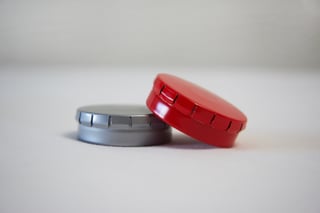Satisfying one's appetite is one of the primary goals of the industry that makes chocolate, biscuits and confectionary. In order to meet that challenge, marketers must explore parameters beyond the food itself that appeal to multisensory perceptions. An important element of how people judge food that is often overlooked is weight of the product and the container. Here's a deeper look at how product or container weight can influence people's perceptions and purchasing decisions about food.
Container Weight Research
A growing body of appetite studies to observe how people correlate product weight with other perceptions, such as product density and fullness expectations, point to suggestions that marketers of chocolate, biscuits and confectionery should use this evidence as a guide to improve packaging based on visuals, weight and other subtleties. Researchers have sought to learn about the relationships between container weight, perceived density of food before consuming it and expected satiation. Several of these studies confirm that perception of satiety is related to factors beyond what the product tastes like. Some of these studies include:
- Wooley, 1972
- Raghubir & Krishna, 1999
- Yeomans, Lartamo, Procter, Lee & Gray, 2001
- Wansink, van Ittersum & Painter, 2006
- Irvine, Brunstrom & Rogers, 2008
- Bilman, van Triip & Renes, 2010
- Brunstrom, Collingwood & Rogers, 2010
- Brunstrom, Brown, Hinton, Rogers and Fay, 2011
- Piqueras-Fiszman, Harrar, Alcaide & Spence, 2011
Weight Density Illusion
Illusions are often thought of as misconceptions of reality, but everyone experiences them on some sensory level. Weight density illusion is a perception of how weight affects impressions on how filling food may be based on assumptions, past experiences and overall presentation that may not correspond with physical attributes of food or packaging. Heavy containers, for example, are perceived to equate to denser food compared with the exact same contents in physically lighter containers.
Expected Satiety
 Several factors can influence an individual's satiation expectations of food before they taste it. Even slight modifications to container weight can have a dramatic impact on expectations of a filling meal or dessert. Here are examples, based on the above studies, of factors that can influence a perception of increased satiety:
Several factors can influence an individual's satiation expectations of food before they taste it. Even slight modifications to container weight can have a dramatic impact on expectations of a filling meal or dessert. Here are examples, based on the above studies, of factors that can influence a perception of increased satiety:
- when food becomes more familiar
- nutritional information
- high calorie food
- energy density information
- perceived volume of food served
- portion size of food intake
- container or bowl weight
Conversely, a 2008 study by Brunstrom, Shakeshaft & Scott-Samuel observed that high fat and more energy-dense foods are perceived to be less filling than lower energy-dense foods. The authors speculated that these expectations may be learned rather than based on the physical nature of the food.
Conclusion
Heavy containers can be more satiating than when food is presented in a lighter container according to ongoing studies. Makers and marketers of chocolate, biscuits and confectionery should consider conducting their own tests to determine ideal product weight. Customer expectations can be influenced by visual appearances, particularly the weight-density illusion, as heavier container weight is often perceived as more food density, creating a filling sensation. Food marketers should keep in mind that these factors affect consumer purchasing decisions. Desjardin has been producing packaging for Chocolates , Biscuits and Confectionery packaging for more than 100 years. The company's experts are at your service to help you find the right packaging to support your products' success.
Disclaimer:
The postings in this blog section do not necessarily represent Desjardin's positions, strategies or opinions.
References and Further Reading
- More articles on Chocolates , Biscuits and Confectionery packaging, by Alex Cosper and Dawn M. Turner
- Multisensory design: Reaching out to touch the consumer (2011) by Charles Spence and Alberto Gallace
- Assessing the influence of the color of the plate on 2 the perception of a complex food in a restaurant setting (2013), by Betina Piqueras-Fiszman, Agnes Giboreau and Charles Spence
- Does the weight of the dish influence our perception of food? (2011), by Betina Piqueras-Fiszman, Vanessa Harrar, Jorge Alcaide and Charles Spence
- The weight of the container influences expected satiety, perceived density and subsequent expected fullness (2011), by
Betina Piqueras-Fiszman and Charles Spence






